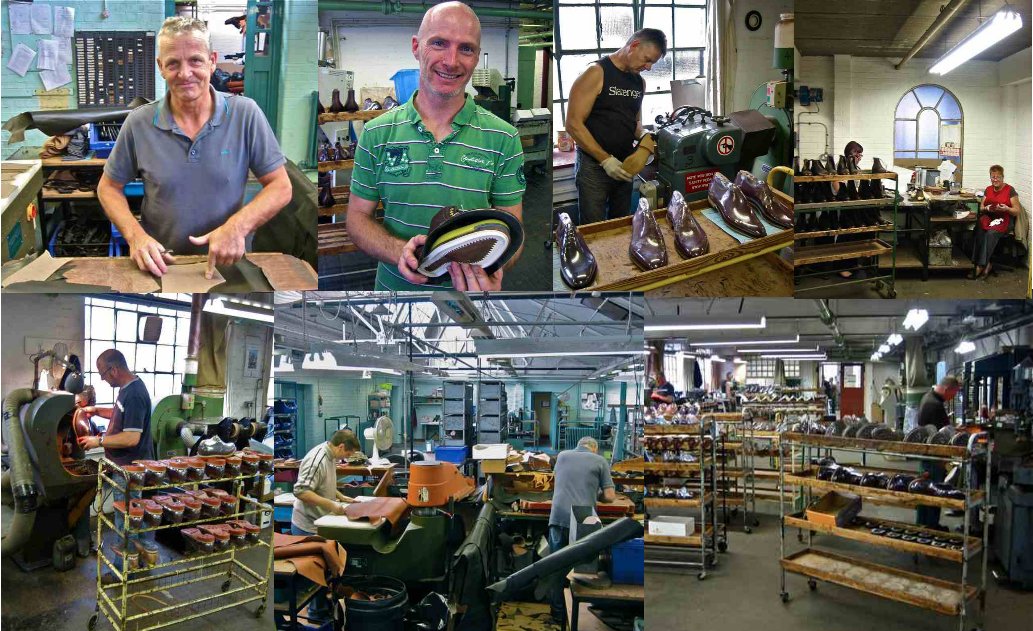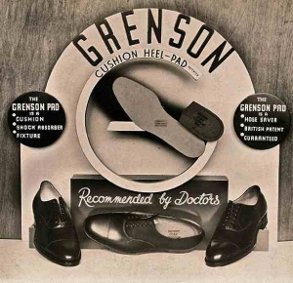 This article has originally been published online on the Spitalfields website on October 19th 2011, and is republished with permission.
This article has originally been published online on the Spitalfields website on October 19th 2011, and is republished with permission.
By: The Gentle Author, @thegentleauthor, author and researcher of Spitalfield Life, a website dedicated to the area of the same name in London’s East End.
Starting in 1866, a shoe factor by the name of William Green came regularly from Northamptonshire up to the City of London to get orders and then take them back to Rushden where, in 1874, he opened his first factory as William Green & Son, founding the company we know today as Grenson.
Now that Grenson have opened two shops in Spitalfields, I set out to follow William Green’s footsteps back to where it all started. In his time – and until quite recently – Northamptonshire was renowned as the centre of the British shoe industry. Yet although those days are gone, the red brick Grenson factory, turreted at one end, still stands majestic among the little terraced streets at the heart of Rushden, just as it did when William Green opened it in 1895.
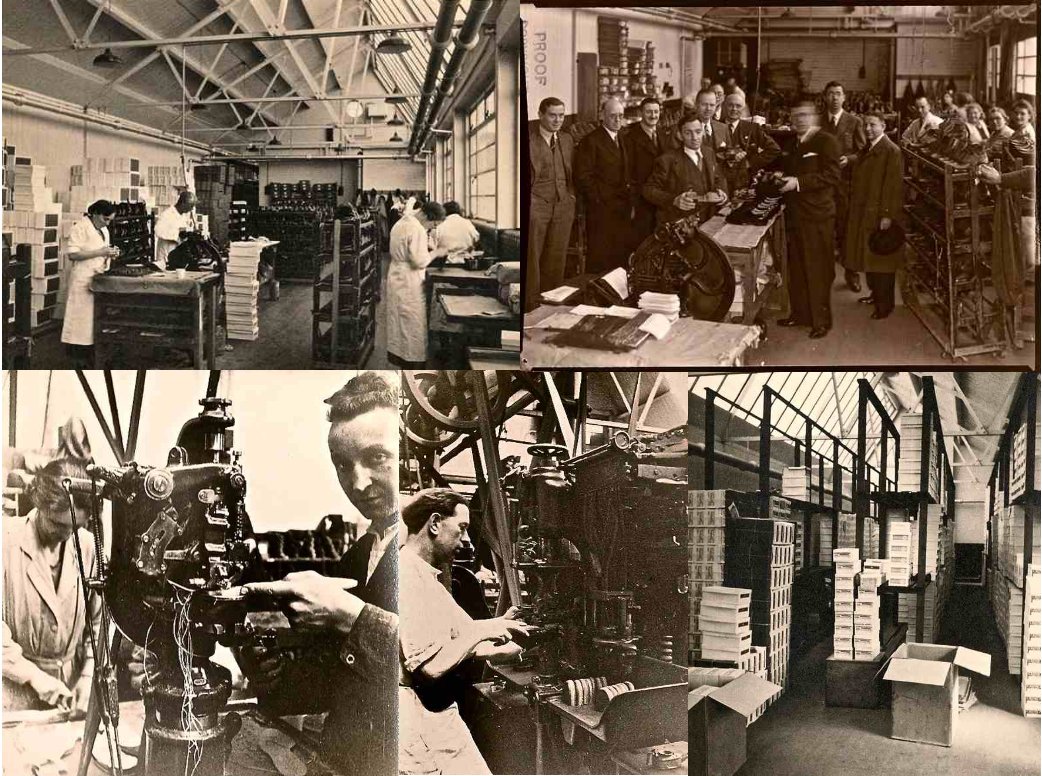
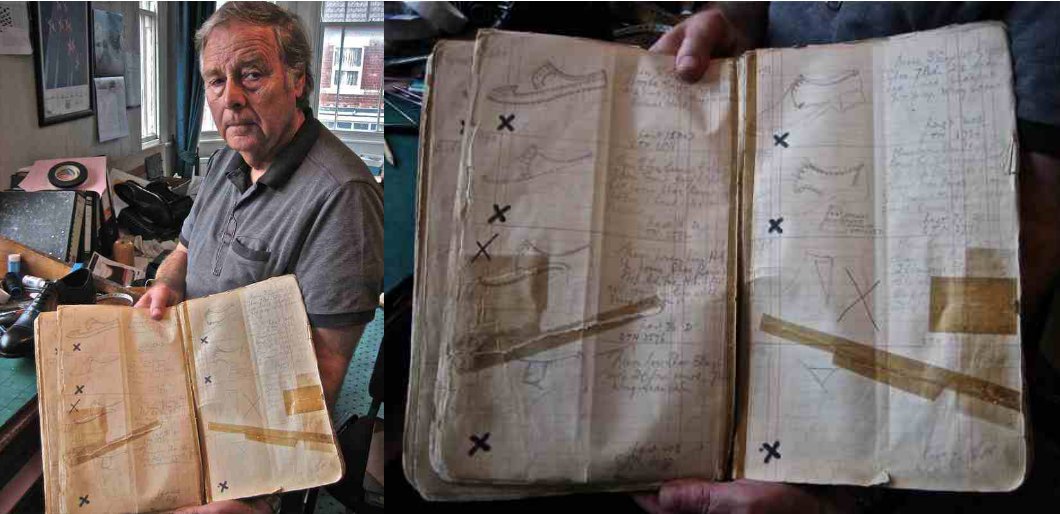
My grandparents were blacksmiths," he explained by way of introducing himself,"and I always understood the surname originated from that.” I could not help admiring Roger’s venerable brogues, cut from his own patterns. “Because I work in a shoe factory, I do not polish my shoes,” he confessed with a blush and a shy smile in response to my compliment. In fact, Roger is a key employee at the Grenson factory where he has worked since 1981.”I cut the patterns that make the uppers of the shoe, creating the style from a drawing,” he explained.
“I just naturally do it,” Roger added – just in case I should get an inkling how skillful he is – opening an old ledger full of drawings of shoes as he cast his mind back, “I was seventeen when I joined the shoe trade – in the clicking department.” Minutes later, we stood in the clicking department where foreman Robert Taylor – who knows a trick or two with a knife – revealed that this name derives from the sound the blade makes when you pull it out from thick leather, once you have finished cutting round the patterns.
Here at the centre of the old factory, intoxicated by the smell of new leather, I took a moment to appreciate this extraordinary industrial structure, designed to admit Northern light from rows of windows in the roof, creating an interior space almost ecclesiastical in its luminosity. Ancient photographs, ledgers, racks for time cards and most importantly old machines – well-maintained and working as well as ever – attest to more than century of shoemaking within these walls.
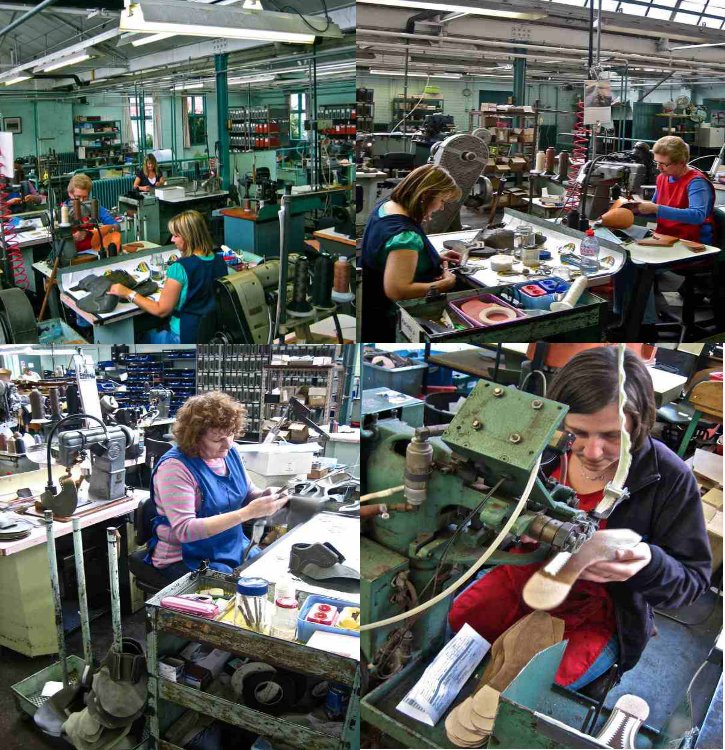
Yet this magnificent factory is not, as you might assume, some arcane endeavour quietly fading into obsolescence, like so many of the other Northamptonshire shoe factories that have gone forever. Instead, Grenson is enjoying a renaissance. Breaking his customary reserve, Roger turned positively declamatory to assure me “The future is very good for us.”
Today, he works very closely with new proprietor Tim Little to create shoes he describes as “traditional footwear with a little bit of a twist – a livelier look,” and the result has been that Grenson shoes have become popular with a whole new generation of younger customers, alongside those who have always bought their classic English styles.
“We were the first to bring out platform shoes for men in the seventies,” Roger reminded me, just in case I had assumed he was complete fogey. In fact, the current evolution of Grenson has been achieved through more subtle means, retaining the integrity of Roger’s classic shoe patterns while introducing different colours and soles to make them contemporary.
From his modest office on the top floor, Tim Little is evangelical to uphold the Grenson tradition and make it relevant in the twenty-first century. “There'd be no point, if I didn't love English shoes and the way they have evolved,” he confided to me, committed to keep William Green’s business alive in Rushden, and to be selling shoes in London where his predecessor took orders a hundred and fifty years ago.
